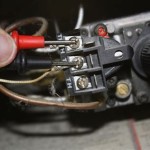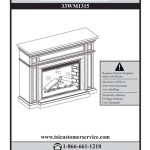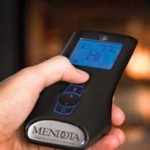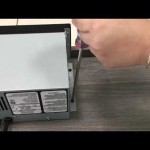```html
Fireplace Screen Door: A Comprehensive Guide
A fireplace screen door is a protective barrier installed in front of a fireplace opening. Its primary function is to contain sparks, embers, and ash, preventing them from escaping the fireplace and potentially causing fire hazards or damage to the surrounding environment. Beyond safety, a fireplace screen door can also contribute to the aesthetic appeal of a living space, acting as a decorative element that complements the overall design of the room.
The construction of a fireplace screen door typically involves a metal frame, often made of steel, iron, or aluminum, and a mesh screen composed of a similar metal. The mesh screen allows for airflow, enabling the fire to breathe and burn efficiently, while simultaneously preventing the passage of hazardous embers. Some models feature doors that can be opened for easy access to the fire, facilitating the addition of wood or tending to the flames. Others may be a single, fixed panel.
The selection of a suitable fireplace screen door requires consideration of several factors, including the size and shape of the fireplace opening, the desired aesthetic, and the level of protection required. Understanding the various types of screen doors available and their respective features is crucial for making an informed decision.
Key Considerations When Choosing a Fireplace Screen Door
Several factors should be taken into account when selecting a fireplace screen door to ensure it meets both functional and aesthetic requirements. These include size and fit, material and construction, and style and design.
Size and Fit: Accurate measurement of the fireplace opening is paramount. The screen door must be appropriately sized to effectively contain sparks and embers. Measure the width and height of the fireplace opening, taking the measurements at the widest and tallest points. It is generally recommended to choose a screen door that is slightly larger than the opening to provide an adequate overlap and ensure complete coverage. An ill-fitting screen door can compromise its safety function and detract from the overall appearance of the fireplace.
Material and Construction: The materials used in the construction of a fireplace screen door directly impact its durability, heat resistance, and overall longevity. Steel and iron are common choices due to their robustness and ability to withstand high temperatures. Aluminum, while lighter and more resistant to rust, may not be as durable as steel or iron for high-heat applications. The gauge of the metal mesh screen is also important; a thicker gauge indicates greater resistance to damage and a longer lifespan. The quality of the welds and joints should also be inspected to ensure structural integrity.
Style and Design: Fireplace screen doors are available in a wide range of styles and designs to complement various interior decor themes. Options range from simple, minimalist designs to more elaborate, decorative styles featuring intricate patterns or ornamental details. Consider the existing style of the fireplace and the surrounding room when selecting a screen door to ensure a cohesive and visually appealing look. Finishes such as black, bronze, and brushed nickel are commonly available, allowing for further customization. Some screen doors also feature added features such as hinged doors for easier access to the fire, or tempered glass panels for increased safety and visibility.
Types of Fireplace Screen Doors
The market offers a variety of fireplace screen door types, each with its own advantages and disadvantages. Understanding these differences will help in selecting the most appropriate option for a specific fireplace and personal preferences.
Single-Panel Screens: Single-panel screens are the simplest and most economical type of fireplace screen door. They consist of a single, rectangular screen that is placed in front of the fireplace opening. These screens are typically freestanding, supported by legs or feet. While they are easy to install and move, single-panel screens do not offer the same level of convenience as screens with doors for adding wood or tending to the fire. They are best suited for fireplaces that are not used frequently or where accessibility to the fire is not a primary concern.
Tri-Panel Screens: Tri-panel screens consist of three hinged panels, with the center panel positioned directly in front of the fireplace opening and the side panels angled inward to provide stability. This design offers a greater degree of flexibility in terms of positioning and stability compared to single-panel screens. Tri-panel screens are also generally more visually appealing, providing a more substantial and decorative presence in front of the fireplace. However, like single-panel screens, they do not offer doors for easy access to the fire. The hinged design can also be slightly less stable than other options, especially on uneven surfaces.
Fireplace Doors (Bi-Fold or Single-Door): Fireplace doors, also known as glass doors, offer the highest level of protection and convenience. These doors feature a metal frame with tempered glass panels that enclose the fireplace opening. Bi-fold doors consist of two hinged doors that open in the center, while single-door units have a single door that swings open to one side. Fireplace doors provide a tight seal, preventing sparks, embers, and smoke from escaping the fireplace. They also help to improve the efficiency of the fireplace by reducing air leakage and heat loss. While fireplace doors are more expensive than other types of screens, they offer significant advantages in terms of safety, convenience, and energy efficiency. They also offer different styles, such as inside fit doors and outside fit doors giving more options to choose.
Mesh Curtain Screens: These consist of a mesh curtain that hangs across the fireplace opening. They are often used in older fireplaces or those with unique shapes and sizes. They offer minimal visual obstruction but may not provide the same level of spark protection as other types.
Installation and Maintenance of Fireplace Screen Doors
Proper installation and regular maintenance are essential for ensuring the safety and longevity of a fireplace screen door. The installation process varies depending on the type of screen door, but some general guidelines apply.
Installation: Single-panel and tri-panel screens typically require minimal assembly and can be installed simply by positioning them in front of the fireplace opening. Ensure that the screen is stable and that there are no gaps between the screen and the fireplace surround. Fireplace doors, on the other hand, require more involved installation. The frame of the door must be securely attached to the fireplace opening using screws or anchors. Follow the manufacturer's instructions carefully to ensure proper installation and a tight seal. In some cases, professional installation may be recommended, especially for complex installations or when dealing with gas fireplaces.
Maintenance: Regular cleaning is essential for maintaining the appearance and functionality of a fireplace screen door. Dust and soot can accumulate on the screen and glass panels, reducing visibility and potentially hindering airflow. Use a soft cloth or brush to remove loose dust and debris. For more stubborn stains, use a mild detergent and water solution. Avoid using abrasive cleaners, as they can scratch the surface of the screen or glass. Inspect the screen regularly for any signs of damage, such as tears, holes, or loose welds. Repair any damage promptly to prevent sparks and embers from escaping. For fireplace doors with moving parts, such as hinges and latches, lubricate them periodically to ensure smooth operation. Inspect for rust or corrosion and treat as needed. Tempered glass doors should be cleaned with a glass cleaner specifically designed for high-heat applications.
By following these guidelines, a fireplace screen door will provide years of safe and reliable service, enhancing the beauty and functionality of the fireplace.
The quality and performance of a fireplace screen door depends not only on its initial selection and installation, but also on how well it is maintained over time. Regular cleaning and inspection can help to prevent problems and extend the lifespan of the product. Choosing a high-quality screen door from a reputable manufacturer can also ensure that it is built to withstand the rigors of regular use and provide reliable protection for years to come.
```
Standard Size Masonry Fireplace Doors Fixed Frame

Fireplace Glass Doors Vs Screens Full Service Chimney

Flat Guard Fire Screens With Doors In Solid Steel Plow Hearth

Glass Fireplace Doors

Industrial Fireplace Door Screen Pottery Barn

Fireplace Doors Biltmore Hearth Home

Finley Wood Burning Fireplace Glass Door In Flat Black

Pleasant Hearth Alsip Fireplace Glass Door Doors

Mountain Cabin Fire Screen With Door Plow Hearth

Fireplace Glass Doors Vs Screens Full Service Chimney
Related Posts








